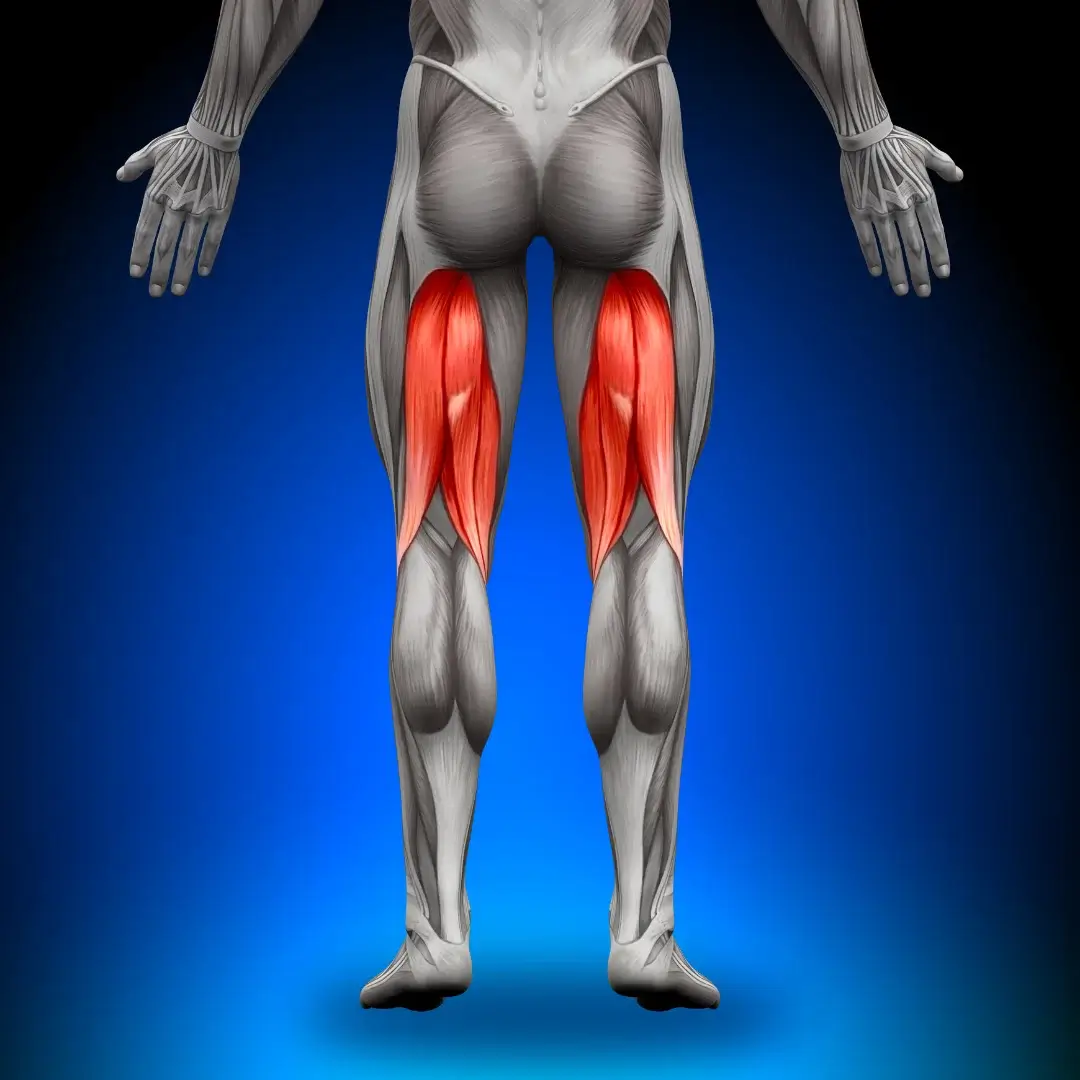Overview:
A hamstring tear, also known as a hamstring strain or pulled hamstring, is a common injury involving the tearing or stretching of the muscles or tendons located at the back of the thigh. This injury can occur during sports activities, sudden movements, or overexertion, leading to pain, weakness, and impaired mobility.
Anatomy:
The hamstring muscles consist of three main muscles located at the back of the thigh: the semitendinosus, semimembranosus, and biceps femoris. These muscles originate from the pelvis and extend down to the knee joint, playing a crucial role in bending the knee and extending the hip.
Causes:
Hamstring tears often occur due to:
- Sudden Acceleration or Deceleration: Rapid movements, such as sprinting, jumping, or changing direction abruptly, can place excessive stress on the hamstring muscles, leading to tears or strains.
- Overstretching: Stretching the hamstring muscles beyond their normal range of motion, especially during activities like stretching or kicking, can result in muscle fibre damage and injury.
- Poor Warm-up or Muscle Fatigue: Inadequate warm-up exercises or fatigue of the hamstring muscles due to prolonged activity may increase the risk of injury during physical exertion.
- Muscle Imbalance or Weakness: Weakness or imbalance between the hamstring and opposing muscle groups, such as the quadriceps, can predispose individuals to hamstring injuries.
Symptoms:
Signs and symptoms of a hamstring tear may include:
- Sudden, Sharp Pain: Acute pain or a tearing sensation in the back of the thigh during physical activity.
- Swelling and Bruising: Swelling, tenderness, and bruising may develop around the injured area within hours or days of the injury.
- Muscle Weakness: Difficulty bearing weight on the affected leg or performing activities that involve bending the knee or extending the hip.
- Limited Range of Motion: Decreased flexibility and range of motion in the hamstring muscles, particularly with stretching or bending movements.
- Difficulty Walking: Pain and discomfort while walking or bearing weight on the injured leg, especially when pushing off the ground.
Diagnosis:
Diagnosis of a hamstring tear typically involves a comprehensive evaluation of symptoms, medical history, and physical examination by a healthcare professional. Imaging tests, such as ultrasound or MRI scans, may be ordered to assess the severity and extent of muscle or tendon damage.
Treatment:
Treatment for a hamstring tear aims to relieve pain, reduce inflammation, promote healing, and restore muscle function:
- Rest and Immobilization: Avoiding activities that aggravate pain and limiting weight-bearing on the injured leg can facilitate the healing process and prevent further injury.
- Ice Therapy: Applying ice packs to the affected area for 15-20 minutes every few hours can help alleviate pain and reduce swelling.
- Compression: Using compression bandages or wraps around the thigh can minimise swelling and provide support to the injured muscles.
- Elevation: Elevating the injured leg above heart level, especially during rest or sleep, can reduce swelling and promote fluid drainage.
- Pain Management: Over-the-counter pain relievers, such as acetaminophen or NSAIDs, may be used to alleviate pain and discomfort.
- Physical Therapy: Gentle stretching and strengthening exercises prescribed by a physical therapist can improve flexibility, strength, and range of motion in the hamstring muscles.
- Gradual Return to Activity: Gradually reintroducing activities and exercises once pain and swelling have subsided can help rebuild muscle strength and function while minimising the risk of reinjury.
Outlook/Prognosis:
The prognosis for a hamstring tear depends on the severity of the injury, promptness of treatment, and adherence to rehabilitation protocols. Most mild to moderate hamstring tears heal within a few weeks with conservative management, while severe tears or those involving tendon rupture may require longer recovery times and possibly surgical intervention. Early intervention, proper rest, and guided rehabilitation are essential for optimal recovery and prevention of recurrent injuries. If symptoms persist or worsen despite conservative measures, further evaluation by a healthcare provider may be necessary to explore additional treatment options.

